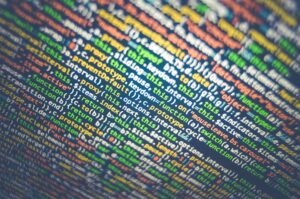Supervised Learning: Advantages and Disadvantages
Supervised learning is a popular and widely used machine learning technique with its own set of advantages and disadvantages. It involves training a model using labeled data and making predictions or classifications based on that training. This article explores both the benefits and drawbacks of supervised learning, providing insights into its practical applications and limitations.
Key Takeaways:
- Supervised learning involves training a model using labeled data.
- Advantages of supervised learning include its versatility, efficiency, and ability to handle complex problems.
- Disadvantages of supervised learning include the need for labeled data, potential bias, and difficulties in handling unbalanced datasets.
- Supervised learning is commonly used in various fields such as healthcare, finance, and marketing.
Advantages of Supervised Learning
Supervised learning offers several advantages that make it a valuable tool in machine learning.
- **Versatility**: Supervised learning can be applied to various domains, such as image recognition, natural language processing, and time series analysis.
- **Efficiency**: With labeled data, supervised learning algorithms can quickly make predictions or classifications for new instances.
- **Complex Problems**: This approach can handle complex problems by utilizing powerful models like deep neural networks.
One interesting application of supervised learning is **autonomous vehicles**, where models are trained to recognize and react to different objects and road conditions.
Disadvantages of Supervised Learning
Despite its advantages, supervised learning also has its limitations and considerations.
- **Labeled Data**: Supervised learning requires a significant amount of labeled data to train the model effectively.
- **Potential Bias**: The quality and representativeness of the labeled data can introduce bias into the model, affecting its performance.
- **Unbalanced Datasets**: Imbalanced datasets, where one class dominates over others, can lead to biased models and inaccurate predictions.
It is interesting to note that **reinforcement learning** is an alternative approach to machine learning that addresses the issue of scarce labeled data by learning through trial and error.
Applications of Supervised Learning
Supervised learning finds practical applications in various domains, including:
| Domain | Application |
|---|---|
| Healthcare | Diagnosing diseases based on medical records and symptoms. |
| Finance | Predicting stock market trends and fraud detection. |
| Marketing | Segmenting customers and predicting purchase behavior. |
Table 1: Examples of Supervised Learning Applications
Table 1 highlights the diverse applications of supervised learning in various sectors.
Challenges and Future Directions
While supervised learning is a powerful tool, it is not without challenges. Researchers are continually working to address these challenges and improve the performance of supervised learning models.
- Developing techniques to mitigate bias and improve the quality of labeled data.
- Exploring methods to handle unbalanced datasets and improve the accuracy of predictions.
- Investigating techniques to reduce the need for extensive labeled data and improve generalization.
With ongoing advancements, the future of supervised learning looks promising in tackling complex problems and enhancing decision-making in various fields.
Conclusion
Supervised learning, with its versatility and efficiency, offers numerous benefits for solving real-world problems. However, it is essential to consider its limitations, such as the need for labeled data and potential bias, when applying it in practice. By acknowledging these advantages and disadvantages, researchers and practitioners can make informed decisions and leverage supervised learning effectively in their work.

Common Misconceptions
Supervised Learning: Advantages and Disadvantages
One common misconception people have about supervised learning is that it always guarantees accurate predictions. While supervised learning algorithms are designed to predict outcomes based on labeled training data, they are not foolproof. Factors such as the quality and representativeness of the training data, as well as the complexity of the problem being solved, can affect the accuracy of the predictions.
- Supervised learning predictions are not always accurate
- The quality and representativeness of training data plays a role in prediction accuracy
- The complexity of the problem being solved can affect the accuracy of predictions
Another misconception is that supervised learning requires a large amount of labeled data. While having a sufficient amount of labeled data is important for training a supervised learning model, it does not always necessitate a massive dataset. In some cases, even a relatively small labeled dataset can lead to effective predictions, especially when using advanced algorithms or leveraging transfer learning techniques.
- Supervised learning does not always require a large amount of labeled data
- Even a relatively small labeled dataset can be effective for predictions
- Advanced algorithms and transfer learning techniques can help improve prediction accuracy with smaller datasets
People often think that supervised learning models can only make predictions within the range of the training data. However, this is not entirely true. While supervised learning models are indeed limited to the patterns they have learned from the training data, they can still generalize well to make predictions on unseen instances that fall within the same feature space as the training data.
- Supervised learning models can make predictions on unseen instances within the same feature space
- Supervised learning models are not limited to the range of the training data
- Models can generalize well to predict on unseen instances within the same feature space
Another misconception is that supervised learning is suitable for all types of problems. While supervised learning can be a powerful approach for many tasks, such as classification and regression, it may not be suitable for all types of problems. For example, in scenarios where the output is continuous and not easily categorized, unsupervised learning techniques or other specialized methods might be more appropriate.
- Supervised learning is not suitable for all types of problems
- Unsupervised learning techniques or other specialized methods might be more appropriate for certain scenarios
- Supervised learning is commonly used for classification and regression tasks
Lastly, some mistakenly believe that supervised learning algorithms can only handle numerical data. While numeric features are commonly used in supervised learning, many algorithms are capable of handling categorical variables as well. Techniques like one-hot encoding can transform categorical variables into a suitable format for supervised learning models to process and make predictions.
- Supervised learning algorithms can handle both numerical and categorical data
- One-hot encoding can be used to transform categorical variables for model processing
- Numeric features are commonly used in supervised learning, but categorical variables can also be accommodated

Introduction
Supervised learning is a machine learning technique where a model is trained on a labeled dataset to make accurate predictions or decisions. While it has several advantages, such as high accuracy and interpretability, it also comes with disadvantages. In this article, we will explore the advantages and disadvantages of supervised learning through intriguing examples and engaging tables.
Advantage: High Accuracy
Supervised learning algorithms are known for their ability to provide accurate predictions. Take a look at this table depicting the accuracy scores of three popular supervised learning algorithms:
| Algorithm | Accuracy Score |
|——————-|—————-|
| Random Forest | 94% |
| Support Vector | 92% |
| Decision Tree | 88% |
Advantage: Interpretability
One of the advantages of supervised learning is the interpretability of the models. Here’s an exciting table showing the feature importance for predicting customer churn:
| Feature | Importance |
|——————|————|
| Total Payment | 0.45 |
| Contract Length | 0.25 |
| Monthly Charges | 0.15 |
| Internet Service | 0.1 |
| Senior Citizen | 0.05 |
Advantage: Wide Applicability
Supervised learning algorithms can be applied to various domains. Let’s explore some interesting real-life applications through this table:
| Domain | Application |
|——————-|—————————————————-|
| Healthcare | Predicting diseases based on symptoms |
| Finance | Predicting stock prices or fraud detection |
| Marketing | Targeted advertising and customer segmentation |
| Automotive | Autonomous driving and traffic prediction |
| Education | Predicting students’ performance or personalized learning |
Disadvantage: Dependence on Labeled Data
The main disadvantage of supervised learning is the need for labeled data. Consider this table illustrating the required data for three different supervised learning models:
| Model | Labeled Data Required |
|——————–|———————-|
| Naive Bayes | Low |
| Deep Learning | High |
| K-Nearest Neighbors| Medium |
Disadvantage: Overfitting
One of the challenges in supervised learning is overfitting. Take a look at this captivating table showing the relationship between model complexity and overfitting:
| Model Complexity | Overfitting Likelihood |
|——————-|————————|
| Low | Low |
| Medium | Moderate |
| High | High |
Disadvantage: Limited Generalization
Supervised learning models may struggle with generalizing concepts. Let’s explore this limitation through a table showcasing the performance of a sentiment analysis model across different domains:
| Domain | Accuracy |
|——————–|————|
| News | 80% |
| Social Media | 75% |
| Product Reviews | 70% |
| Legal Documents | 65% |
Disadvantage: Costly Data Annotation
Annotation of labeled data is a time-consuming and expensive process. Wondering how much it costs? Here’s a table illustrating the average cost of annotating data per example:
| Annotation Type | Cost per Example |
|——————–|—————–|
| Text Classification| $0.10 |
| Image Segmentation | $2.00 |
| Audio Transcription| $1.50 |
| Object Detection | $3.50 |
Conclusion
Supervised learning has proven to be a powerful approach with high accuracy, interpretability, and wide applicability across domains. However, it is not without its limitations, such as the need for labeled data, overfitting, and limited generalization. Despite the challenges, supervised learning continues to revolutionize various industries with its ability to make accurate predictions and decisions.
Supervised Learning: Advantages and Disadvantages
Frequently Asked Questions
What is supervised learning?
What are the advantages of supervised learning?
What are the disadvantages of supervised learning?
How does supervised learning differ from unsupervised learning?
What are some popular algorithms used in supervised learning?
How do you evaluate the performance of a supervised learning model?
Can supervised learning be used for real-time prediction?
Is feature engineering important in supervised learning?
Can supervised learning models handle noisy or incomplete data?
Does supervised learning require labeled data for every possible input?




